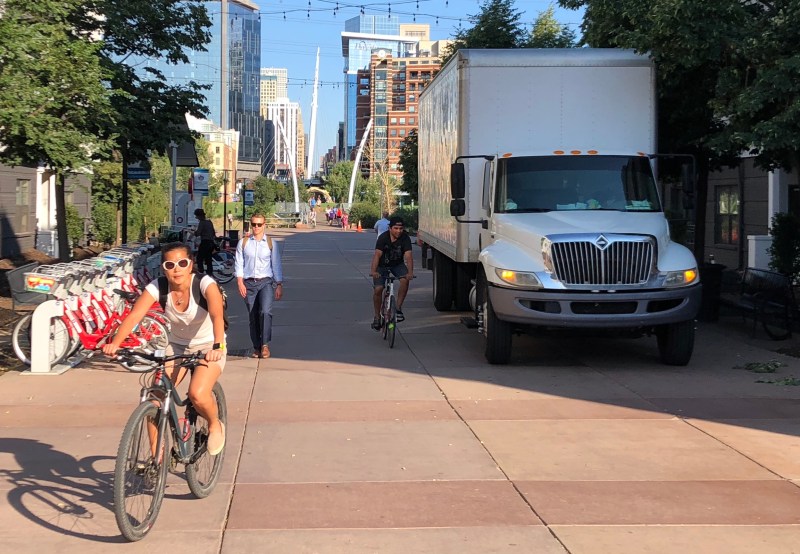Beyond the Bike Lane: Thinking More Critically About Mobility Freedom

This column is part of Streetsblog Denver’s Summer Reader Takeover, where we give you a platform to talk urban transportation. The author’s views don’t necessarily reflect those of Streetsblog Denver.
After three years of volunteering my time advocating for active transportation, collecting signatures, and attending community meetings in support of multiple bike lane projects, my first bike commute convinced me that they aren’t always worth fighting for.
Riding to work at the Anschutz Medical Campus soon after moving to Denver last year, I quickly learned the better route was a block away from the striped lane on a quiet side street. While I knew the bike lane that I rode that first day represented hours of effort by advocates like myself, it wasn’t enough to keep me biking alongside an unprotected strip of paint while cars continuously buzzed me.
The problem is not the bike lane itself, but the missed opportunity to do better. Our approach to active transportation advocacy too often starts with a singular solution: the bike lane. But bike lanes are not always the most effective way to achieve functional space for car-free transportation. They can be a hard sell to the public and, after years of effort and compromise, we too often end up with unprotected or unconnected lanes that do not serve cyclists well.
If our end goal is freedom of mobility and, ultimately, freedom from the hegemony of cars, then there are solutions beyond the bike lane.
Fort Collins recently created five miles of low-stress bikeways simply by redesigning four intersections. In European and (a few) American cities, woonerfs put pedestrians, cars, scooters, and bicycles on equal footing by removing the traditional delineations. As the recent controversy over dockless electric scooters in Denver shows, there is more to mobility than bikes and pedestrians. We all need a space where we feel comfortable.
People — even NIMBYs — will act against their professed beliefs if social norms swing strong enough in the other direction. The more people we facilitate traveling without cars, the more normalized it becomes, creating a virtuous circle.
Instead of starting with the same solution every time, we need to start with the problem. Define it and deeply understand it, then think creatively, innovate, and even test our ideas on a small scale to find the best solution. Instead of bicycle-lane-centered advocacy, we need human centered design.
It doesn’t have to be scary. Anyone can use brainstorming techniques — Reverse Brainstorming, Brainwriting, Six Thinking Hats, SCAMPER, and dozens of others — to start approaching things differently. Even entire human centered design processes have never been more accessible, with books such as Jake Knapp’s “Sprint,” which outlines processes that any group of motivated advocates can implement.
The resourcefulness and imagination of active transportation advocates — people who take a radical stand each time we bike or walk in our car-centric landscape — has been left untapped too long. Creativity is not something only certain people have. Just like the streets, it belongs to all of us.
Molly Tran lives in Stapleton.


